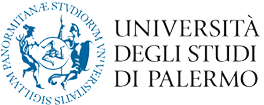Medieval Legal Sources and Digital Tools
This chapter discusses the transformative impact of digitization on the study of medieval legal sources, offering a detailed overview of online resources, databases, and digital tools. It provides a guide to accessing and studying legal manuscripts and texts through the internet while highlighting the opportunities and limitations of this digital shift.
Introduction
The chapter begins by outlining how digitization has revolutionized access to historical legal sources. A process that once required visits to archives or libraries can now be conducted from home, thanks to the proliferation of online repositories. The authors aim to present a range of digital resources related to medieval legal history, focusing on archives, tools, and databases that support research into primary legal sources. They emphasize the need to use these tools thoughtfully, balancing convenience with a critical understanding of the sources.
Les archives juridiques en ligne : catalogues, collections, portails et media (Online Legal Archives: Catalogues, Collections, Portals, and Media)
The expansion of digital archives has made millions of manuscripts, documents, and books accessible online. Key examples include:
- General Repositories: Platforms like Google Books, Internet Archive, and HathiTrust provide access to vast collections of historical texts.
- National Portals: Country-specific platforms such as France’s Gallica, Germany’s Deutsche Digitale Bibliothek, and Poland’s Polona aggregate resources from libraries and archives.
- Specialized Manuscript Repositories: Sites like the Vatican Library’s digital portal and e-codices (Switzerland) focus specifically on medieval manuscripts. These resources provide researchers with a wealth of materials but require careful navigation to locate relevant legal sources.
Pour une recherche concernant les sources juridiques médiévales (For Research on Medieval Legal Sources)
The authors provide an overview of specialized databases and tools for studying medieval legal sources:
- Roman Law: Resources such as the Roman Law Library and Repertorium offer critical editions and searchable databases for texts like the Corpus Iuris Civilis.
- Canon Law: Platforms like Clavis Canonum and the Corpus Synodalium provide access to canonical texts and local ecclesiastical legislation.
- Customary and Local Laws: Databases like Monumenta Germaniae Historica and Policeyordnungen focus on local legal traditions and regulatory laws in medieval Europe.
Les outils digitaux pour faciliter l’étude des sources juridiques (Digital Tools to Facilitate the Study of Legal Sources)
Digital tools play a crucial role in analyzing and interpreting legal texts:
- Latin Dictionaries: Online resources like the Lewis & Short Dictionary, DuCange, and the Dictionary of Medieval Latin from British Sources aid in translating and understanding Latin texts.
- Handwriting Recognition: Technologies such as Transkribus use machine learning to transcribe medieval manuscripts, offering significant support for researchers.
- Specialized Tools: Platforms like Repertorium utriusque iuris streamline the identification of legal references, while the Lexicon Abbreviaturarum assists with deciphering abbreviations in manuscripts.
Conclusion
The authors highlight the opportunities provided by digitization for studying medieval legal sources. However, they caution that digital tools cannot replace the expertise of scholars. Contextual analysis, critical interpretation, and understanding of the broader historical framework remain essential. While digital platforms accelerate access and expand the scope of research, the human element is indispensable for interpreting complex legal texts.







